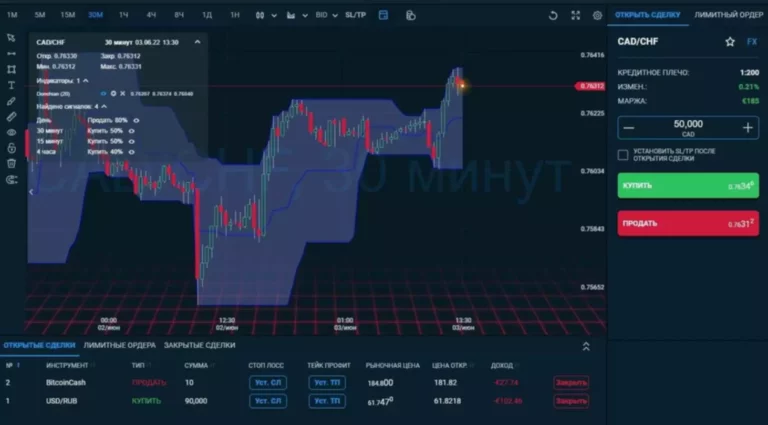Instead, the bridge functionality involves a two-stage course of involving sensible contracts and minting. Blockchain bridges exchange information, knowledge, property, and extra across multiple blockchains for varied reasons. These processes may be damaged down additional into trustless or federated bridges.
Some blockchain bridges might require customers to trust a centralized authority or intermediary. However, with proper precautions and cautious vetting of the bridge technology, many of these risks may be mitigated. Wrapped asset bridges facilitate the transfer of non-native property between blockchains. A nice example can be Wrapped BTC, which mints WBTC on Ethereum for buying and selling and DeFi functions. The next in style entry among examples of blockchain bridges can be Avalanche Bridge. It is also a bidirectional bridge for transferring belongings between Ethereum and Avalanche networks.
Decrease Transaction Charges
Their capacity to attach disparate networks not solely enhances performance but in addition paves the way for a more integrated and environment friendly blockchain ecosystem. As the web3landscape continues to mature, the position of bridges in enabling this interconnected future turns into more and more indispensable. Moreover, supporting and funding revolutionary research initiatives targeted on novel trustless protocols and cryptographic mechanisms can pave the way in which for a more secure future of interoperability.
Most commonly, there aren’t any belongings actually despatched, yet the original asset is locked up in the protocol, while one other new token representing the asset is minted on the corresponding blockchain. Blockchain bridges and related property are additionally among the hottest crypto assets to commerce today. PrimeXBT just lately added Polkadot, alongside a quantity of other altcoins, next to Bitcoin, Ethereum, and Litecoin. Blockchains right now are like tiny cities or towns with shortly growing communities. As these communities grow and their needs evolve, the need for bridges to attach one ecosystem with another turns into more important.

Bridges can mitigate network congestion by permitting transactions to be processed on completely different blockchains. As some of the in style solutions to bridging blockchains is to require some level of trust this naturally brings the disadvantages of a single central level of management. Though ChainBridge aspires to a more decentralised mannequin, it suffers the identical problem as Bitgo and custodial bridges – they binance bridge alternative are counter to the decentralised principles of blockchains. Polkadot provide an fascinating dimension to the interoperability debate, positioning itself because the blockchain of blockchains, or layer zero. This solves the cross-chain drawback as a outcome of it creates a broader environment with which suitable blockchains can exist, constructed utilizing the only Polkadot framework.
Ethereum is considered one of the best-known smart-contract networks, enabling NFTs, cross-chain bridges, and different blockchain features. Bridges streamline the process of moving digital belongings from one blockchain to another. Without cross-chain bridges, exchanging property between two chains requires the usage of a centralized change, which may be an inefficient and expensive alternative. The present disadvantage of blockchain know-how is that each ecosystem is siloed. This prevents property and users from being shared from one ecosystem to another. Blockchain bridges are the key to eliminating the disadvantages of blockchain.
This doesn’t just lead to the lack of assets held by the exposed end of the bridge however has important knock-on effects. In February the Wormhole Bridge hack saw 120,000 Wrapped Ether (wETH) tokens, valued at $326million, stolen from the Solana aspect of a bridge to Ethereum. A centralised service verifying knowledge is a single point of failure because it might possibly censor a transaction or just abuse the trust that you need to place in them.
Switch Crypto To A Unique Blockchain
Most bridges utilizing this technique usually have staking and farming programs the place users can lock their belongings into the pool for periodic rewards. From connecting to public chains to custody, our digital asset platform is constructed that will help you manage all digital assets and tokenization. Keep the Lindy Effect in thoughts when evaluating new concepts within the blockchain area, which basically means the longer something has been around, the more likely it’s to stay longer. Trusted bridges embrace some component of centralization to complete a switch from one blockchain to a different on behalf of the person. Usually, a central entity or system is liable for the security of the bridge.

As cities and cities started to scale in dimension and communities needed to develop for economies to also scale, bridges, canals, and different methods to travel and transfer items had been created. Over time, the huge interconnected international economic system of at present blossomed, and so will the blockchain eventually. The Cosmos Gravity bridge transfers funds and knowledge forwards and backwards between Ethereum and Cosmos. The Gravity module is carried out on the Cosmos chain and is responsible for minting tokens. So why in that case, weren’t blockchains designed from the bottom up to be compatible with one another? When Satoshi Nakamoto was creating Bitcoin, they weren’t excited about the means to include tons of of cash and blockchains that didn’t but exist in any respect.
How Does A Bridge Work?
This cross-chain interoperability unlocks a wealth of benefits, transforming the fragmented crypto landscape into an interconnected system. Crypto bridges work by establishing a connection between two completely different blockchain networks, allowing the transfer of property and data between them. They do that by maintaining unified liquidity pools and unique useful resource balancing algorithms. These liquidity pools have native assets linked to all chains at the similar time, permitting for environment friendly swaps. Crypto bridges play an important role in enhancing the interoperability and functionality of varied blockchain ecosystems.
Blockchain bridges are software program protocols that allow for the interoperability and communication between two or more separate blockchain networks. Essentially, blockchain bridges are a mechanism for connecting completely different blockchain networks so that they’ll exchange information and property with each other. In the identical method that tangible bridges connect two physical areas, blockchain bridges join totally different networks or token ecosystems.
They exist in numerous forms primarily based on the developers behind them and the degree of management they offer to users. Avalanche Bridge – The Avalanche Bridge allows for transfers of BTC from Bitcoin to Avalanche’s C-Chain. BTC bridging is accessible through Core, a non-custodial browser extension for Avalanche. By default, methods like Bitcoin and Ethereum, and their property BTC and ETH, are siloed by their very own security models. Users and even miners are sure to the foundations of the consensus mechanism that underpins the safety and accuracy of any distributed ledger.

In 2017, the primary blockchain game of sorts, CryptoKitties, was launched to the public. Due to extraordinarily excessive demand and Ethereum’s community limitations at the time, the network ended up congested. Bridges exist to connect blockchains, permitting the switch of knowledge and tokens between them.
These chains can mint NFTs instantly, leveraging established bridges to draw early liquidity and users from various blockchain ecosystems. In essence, NFT bridges empower protocols and dApps to interrupt free from their unique chains, embrace multi-chain performance, and chart their own impartial but interconnected futures. Users deposit property into a pool on one blockchain and receive an equal worth on another blockchain.
- They have entirely totally different languages and methods of conducting commerce however don’t belief one another.
- Just like blockchain networks featuring distinctive defining parameters, blockchain bridges even have completely different traits.
- It is a software that lets you transfer belongings from one blockchain to another.
- With crypto bridges, you presumably can instantly switch your property cross-chain with a few clicks.
Imagine holding ETH but discovering a lucrative DeFi yield farming opportunity on the Polygon network. Traditionally, you’d be forced to promote your ETH, incur conversion charges, and doubtlessly miss out on fleeting market movements. In both cases one facet of the bridge was uncovered through a technical vulnerability.

An atomic swap is particularly designed to allow the safe exchange of assets between two different blockchains. Blockchain know-how is a shared, immutable ledger that acts as a digital report for monitoring transactions and belongings made throughout a network of customers. The asset is mostly a cryptocurrency, however, the expertise behind Ethereum good contracts permit virtually anything of worth to be tokenized and placed on the blockchain. As the blockchain industry grows vast and expands, the want to join the varied blockchain ecosystems together is turning into extra needed. Blockchain bridges introduce interoperability into present blockchain expertise to create a more cohesive and interconnected neighborhood of users.
By bridging completely different blockchain networks, users can move their belongings seamlessly between totally different networks, making a more linked and interoperable blockchain ecosystem. This helps scale back the complexity of managing a quantity of accounts on different blockchains and makes it easier for developers https://www.xcritical.com/ to build dApps that work throughout multiple blockchain networks. Using a blockchain bridge as a substitute of a centralized trade provides several advantages. Bridges allow direct, peer-to-peer transactions between completely different blockchains, decreasing reliance on central intermediaries.
